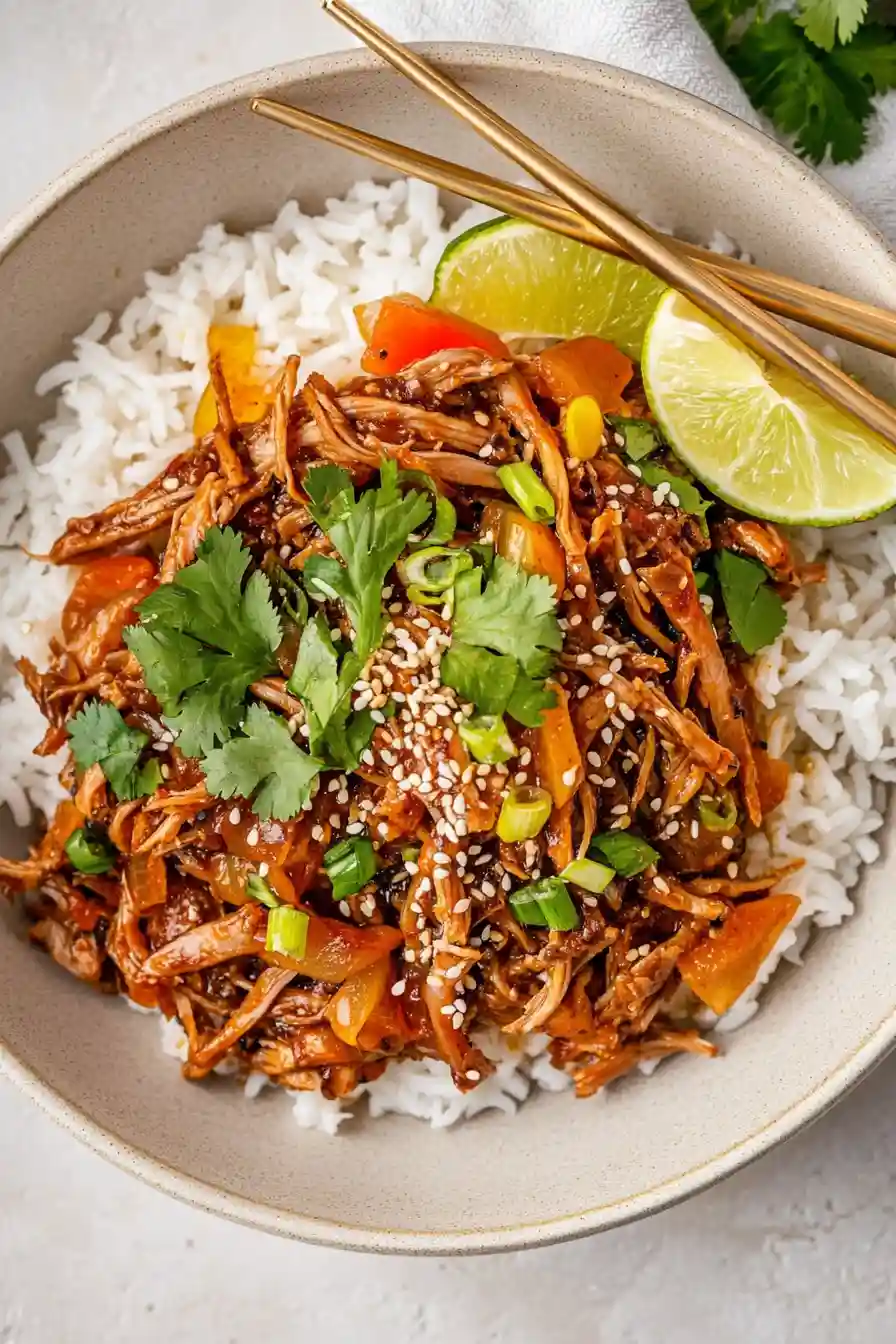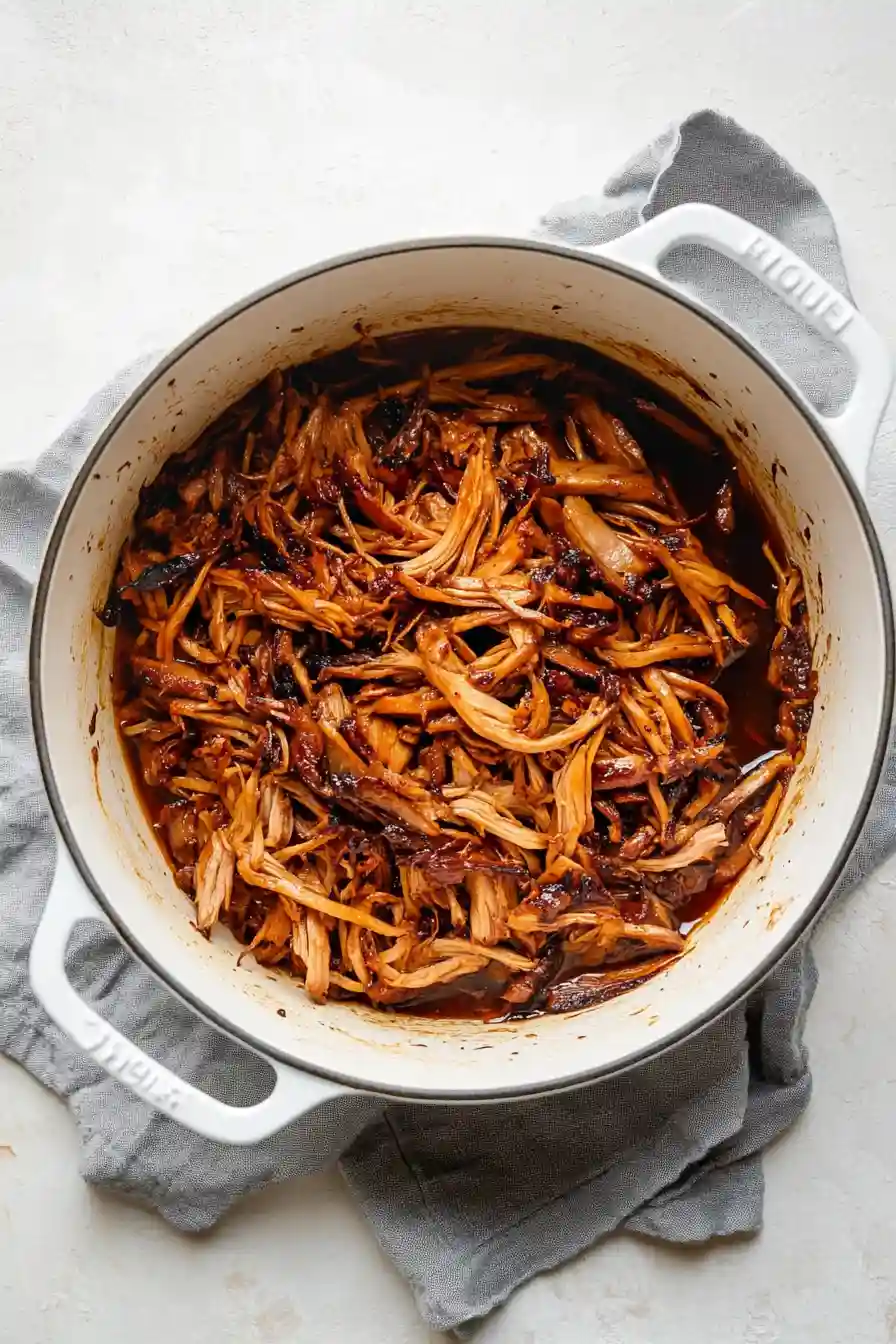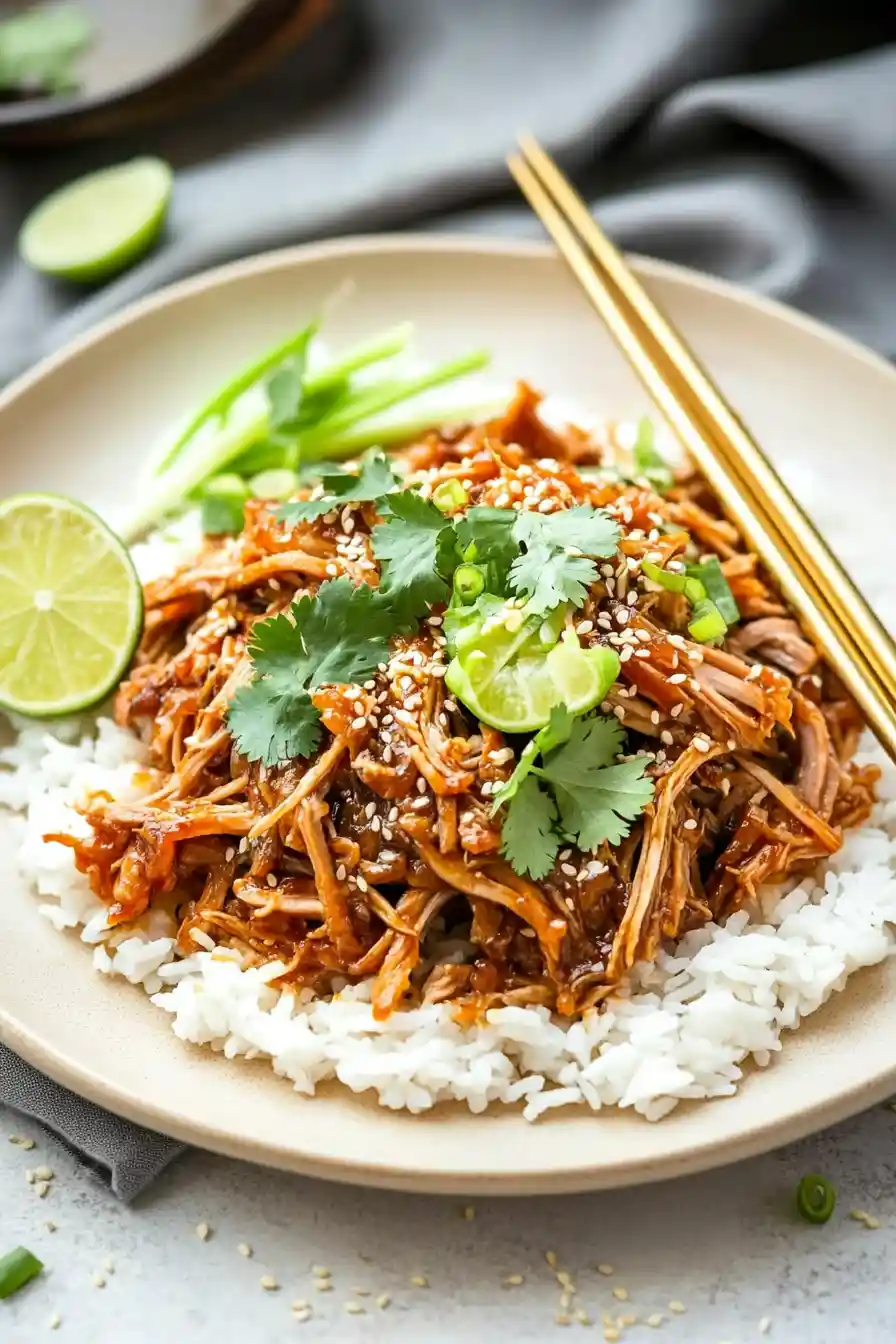I never thought much about braised pork until I had it at my neighbor’s house during Chinese New Year. Growing up, our family dinners mostly consisted of pot roast and meatloaf. The pork shoulder my neighbor served was so tender it practically fell apart with just a fork.
That’s when I learned the magic of braising – it’s really just letting meat cook slowly in liquid until it becomes super soft. While it might sound fancy, it’s actually one of the most hands-off cooking methods I’ve discovered. You basically put everything in a pot, let it simmer, and go about your day while it does its thing.

Why You’ll Love This Braised Pork Shoulder
- Minimal hands-on time – While this dish takes a few hours to cook, most of that time is completely hands-off. Just set it up and let it do its thing while you tackle other tasks.
- Big batch cooking – One pork shoulder makes enough to feed a crowd or give you delicious leftovers that taste even better the next day.
- Foolproof recipe – The long, slow cooking process means you really can’t mess this up – the meat will come out tender and flavorful every time.
- Customizable serving options – From rice bowls to tacos to sandwiches, this tender pork can be the star of many different meals throughout the week.
- Budget-friendly – Pork shoulder is one of the most affordable cuts of meat, making this an economical choice for feeding a family.
What Kind of Pork Shoulder Should I Use?
Both bone-in and boneless pork shoulder will work great for this braised dish, though bone-in tends to add extra flavor during the long cooking process. You might see pork shoulder labeled as “Boston butt” or “pork butt” at the store – don’t worry, these are actually the same cut and come from the upper part of the shoulder, not the rear of the pig. Look for a piece with good marbling (those white streaks of fat running through the meat) since this fat helps keep the meat moist and tender during cooking. If you’re buying from the butcher counter, ask them to leave a thin layer of fat on top, which will help baste the meat as it cooks.

Options for Substitutions
This Asian braised pork recipe is pretty adaptable – here’s what you can swap if needed:
- Pork shoulder: While pork shoulder gives the best results for this dish, you can use pork butt or even pork belly. If you’re not into pork, try beef chuck roast – just know it might need an extra hour of cooking time.
- Coconut aminos: You can use soy sauce instead, but start with half the amount since it’s saltier. Tamari works great too if you need a gluten-free option.
- Coconut sugar: Brown sugar works perfectly as a 1:1 replacement. Regular sugar or even honey will do the job – though honey is sweeter, so use about 3 tablespoons instead.
- Fish sauce: If you’re not a fan of fish sauce, try using Worcestershire sauce mixed with a pinch of salt. It won’t be exactly the same, but it’ll add that nice umami flavor.
- Rice vinegar: Apple cider vinegar or white wine vinegar can work in place of rice vinegar – use the same amount.
- Toppings: The toppings are totally flexible – swap cilantro with Thai basil, use regular cabbage instead of kimchi, or try different types of onions. These won’t affect the main recipe at all.
Watch Out for These Mistakes While Cooking
The biggest mistake when cooking pork shoulder is rushing the process – this cut needs low and slow cooking (at least 3-4 hours at 325°F) to break down the tough connective tissues and become fork-tender. Another common error is skipping the crucial step of patting the meat dry and searing it well before braising – taking an extra 10-15 minutes to brown all sides creates a deeper flavor base and better texture. The liquid level in your braising pot matters too – you’ll want it to come about halfway up the sides of the meat, not completely submerge it, as too much liquid can dilute the rich flavors you’re trying to develop. For the best results, let the pork rest for 15-20 minutes after cooking before shredding, and don’t discard that braising liquid – it can be reduced into a fantastic sauce while the meat rests.

What to Serve With Asian Braised Pork?
This tender braised pork is super flexible when it comes to sides – I love setting up a little DIY rice bowl station so everyone can build their own perfect plate. The juicy meat is already great over plain white rice, but you can also swap in brown rice or cauliflower rice if that’s more your style. I usually put out some quick pickled vegetables like cucumbers or carrots for crunch, and steamed baby bok choy or sautéed green beans make excellent veggie sides. For a complete meal that’ll make everyone happy, serve everything family-style with extra sauce on the side and let people mix and match their toppings like kimchi, herbs, and chili oil.
Storage Instructions
Keep Fresh: This Asian braised pork shoulder is perfect for meal prep! Place the cooled pork and sauce in an airtight container and keep it in the fridge for up to 4 days. The flavors actually get better as they sit together, making your leftovers even more delicious.
Freeze: Got extras? This dish freezes really well! Portion the meat and sauce into freezer-safe containers or bags and pop them in the freezer for up to 3 months. Just remember to leave a bit of space at the top of your container since liquids expand when frozen.
Reheat: When you’re ready to enjoy your pork again, thaw it overnight in the fridge if frozen. Then warm it up slowly in a covered pot on the stovetop over medium-low heat, or in the microwave in short bursts, stirring occasionally. Add a splash of water or broth if needed to keep it moist. Fresh toppings like cilantro and green onions should always be added after reheating.
| Preparation Time | 15-20 minutes |
| Cooking Time | 240-260 minutes |
| Total Time | 255-280 minutes |
| Level of Difficulty | Medium |
Estimated Nutrition
Estimated nutrition for the whole recipe (without optional ingredients):
- Calories: 2500-3000
- Protein: 200-220 g
- Fat: 180-220 g
- Carbohydrates: 150-180 g
Ingredients
- 3 to 4 pounds pork shoulder (with or without bone)
- Generous amount of salt and pepper for seasoning
- 1/2 cup coconut aminos (or tamari, per taste preference)
- 1/4 cup rice vinegar
- 1/4 cup coconut sugar
- 3 cloves of garlic, minced
- 2-inch piece of ginger, minced
- 1 tablespoon fish sauce
- Cooked rice
- Kimchi
- Fresh cilantro
- Sliced green onions
- Limes for serving
- Chili oil (if desired)
Step 1: Preheat and Prepare the Sauce
Start by preheating your oven to 325°F.
Then, in a small jar or bowl, whisk together coconut aminos, rice vinegar, coconut sugar, minced garlic, grated ginger, and fish sauce.
Ensure that all ingredients are well combined to create a flavorful marinade for the pork.
Step 2: Season and Roast the Pork
Place the pork in a casserole dish, making sure the fat side is facing up to keep the meat juicy.
Season the pork on both sides with salt and pepper.
Pour the prepared sauce mixture over the pork.
Cover the dish with a lid or aluminum foil if your casserole dish doesn’t have a lid.
Place it in the preheated oven and roast for 4 hours, checking at 3 ½ hours to see if the meat is tender and ready to shred.
Step 3: Shred the Pork
Once the pork is tender, remove it from the oven and increase the heat to 425°F.
Using two forks, shred the meat while it is still in the dish, tossing it in the flavorful rendered juices.
If necessary, you can remove some excess fat, but make sure to leave about ½-inch of juice in the dish to keep the meat moist during the next roasting phase.
Step 4: Brown the Pork
Return the shredded pork, uncovered, to the oven.
Roast for about 20 minutes or until the ends of the meat become golden brown but not overly dried out.
This will add a nice crispy texture while keeping the inside juicy.
Step 5: Final Toss and Serve
Remove the dish from the oven and toss the meat once again in the remaining juices to ensure it is well-coated with flavor.
Serve the succulent pork over a bed of rice, and garnish with kimchi, sliced green onions, fresh cilantro, a squeeze of lime juice, and a drizzle of chili oil for a burst of flavor.
Step 6: Enjoy!
Indulge in this savory dish, pairing it with your favorite sides for a delightful meal.
Enjoy the contrast of the tender, juicy pork with the crisp and spicy accompaniments.

